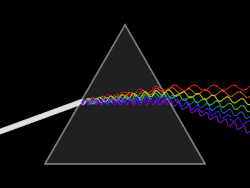THe course will be taught over 14 lectures, include 6 home assignements and one written exam.
ED2210 Electromagnetic Waves in Dispersive Media 6.0 credits

The course describes propagation, absorption and emission of electromagnetic waves in dispersive media, in particular in plasmas.
Information per course offering
Choose semester and course offering to see current information and more about the course, such as course syllabus, study period, and application information.
Information for Spring 2026 TEFRM programme students
- Course location
KTH Campus
- Duration
- 13 Jan 2026 - 13 Mar 2026
- Periods
Spring 2026: P3 (6 hp)
- Pace of study
50%
- Application code
61103
- Form of study
Normal Daytime
- Language of instruction
English
- Course memo
- Number of places
Places are not limited
- Target group
- Open for all master programmes as long as it can be included in your programme.
- Planned modular schedule
- [object Object]
- Schedule
- Schedule is not published
Contact
Course syllabus as PDF
Please note: all information from the Course syllabus is available on this page in an accessible format.
Course syllabus ED2210 (Spring 2021–)Content and learning outcomes
Course disposition
Course contents
The course is divided into four modules:
- Basic properties of electromagnetic waves and Fourier analysis: At the beginning of the course, we will study the bases that are needed later in the course, primarily basic electromagnetics, the concept of plane waves, Fourier transforms and Green functions.
- Electromagnetic response of media: Here, we will study how different media react to electromagnetic fields. We will develop a general theory of homogeneous media and compare with traditional models from electrostatics and magnetostatics. Applications are studied for anisotropic media and dispersive media with resonances. Furthermore, a theory of the dielectric response of plasma will be developed and studied.
- Wave equations and the properties of waves: A general theory of waves in homogeneous media will be presented. Here, the wave equation is represented algebraically as an eigenvalue problem. A number of important examples will be studied in detail, including phenomena such as birefringence (with applications to quarter wave plates), Faraday rotation, and so-called cutoff-resonance pairs. The basic theory of plasma waves is presented and a number of important waves are studied, including plasma oscillations, Langmuir waves, ion-acoustic waves, Alfvén waves and compressible waves.
- Emission processes: Here, we focus on emission from individual charged particles. A general theory of wave emission is presented and Larmor formulas are derived with applications to bremsstrahlung, Thomson scattering and cyclotron emission.
Intended learning outcomes
After passing the course, the student shall be able to
- use Maxwell's equations to formulate and explain electromagnetic wave equations in homogeneous media
- identify and categorise the symmetries of dielectric response tensors and their dispersive, anisotropic and dissipative properties
- derive dielectric response tensors for simple electromechanical media
- derive, analyse and solve wave equations for electromechanical media
- for a given wave-solution, analyse the dispersion relation, calculate group and phase velocities and the energy of the wave
- calculate and analyse how waves propagate in birefringent media and magnetized plasma
- describe how electromagnetic waves can be emitted from free charged particles and describe technical applications for these emission processes.
Literature and preparations
Specific prerequisites
Completed course in electromagnetic theory equivalent to EI1220/EI1320.
Active participation in a course where the final examination is not yet reported in LADOK is considered equivalent to completion of the course.
Registering for a course is counted as active participation. The term 'final examination' encompasses both the regular examination and the first re-examination.
Recommended prerequisites
Courses about mathematical methods in physics and functions of complex variables are recommended.
Literature
Examination and completion
Grading scale
Examination
- ÖVNA - Exercises, 2.0 credits, grading scale: P, F
- TENA - Examination, 4.0 credits, grading scale: A, B, C, D, E, FX, F
Based on recommendation from KTH’s coordinator for disabilities, the examiner will decide how to adapt an examination for students with documented disability.
The examiner may apply another examination format when re-examining individual students.
If the course is discontinued, students may request to be examined during the following two academic years.
Other requirements for final grade
Passed result in assignments and a written examination. The results of these are weighted to a final grade.
Examiner
Ethical approach
- All members of a group are responsible for the group's work.
- In any assessment, every student shall honestly disclose any help received and sources used.
- In an oral assessment, every student shall be able to present and answer questions about the entire assignment and solution.
Further information
Course room in Canvas
Offered by
Main field of study
Education cycle
Supplementary information
Replaces 2A1145.
In this course, the EECS code of honor applies, see: http://www.kth.se/en/eecs/utbildning/hederskodex.